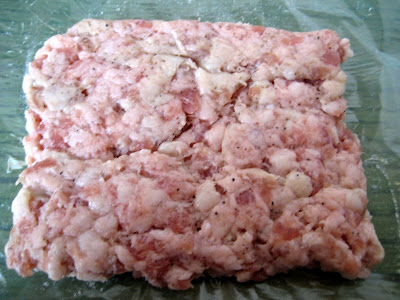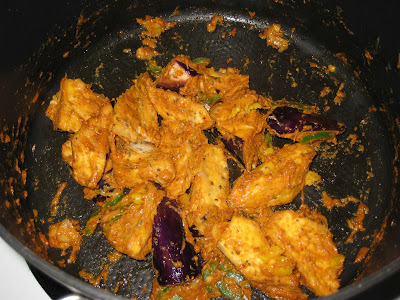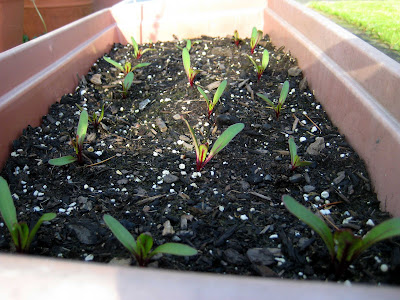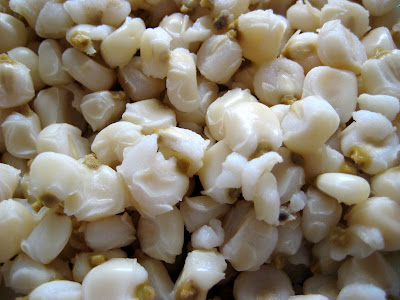A flavorful breakfast sausage is the key to making good Sawmill Gravy (aka sausage gravy).
There are many contenders but few will make the grade.
Today, we have three contenders. All mild breakfast sausage.
John Morrell
Farmland
Independent Meat Co.
I'm the commentator, cook, judge and chairman for this tasting.
We're ready to start.
Allez! Cuisinez!
The packages quickly are opened.
74 grams are weighed out from each roll.
They're formed into rectangular patties, 3.5" by 4".
The George Foreman Grill (GFG) is plugged in and preheating.
Here's a closer look at the challengers.
John Morrell
A very dense pork product that didn't roll out easily. Looking that the patty, you can see solid little cubes of pork fat and appears to be a coarser grind of pork.

Farmland
Softer sausage that rolled out quite easily. The pork is ground finely.

Independent Meat Company
This product was also very easy to roll. Also, the one appeared to have a lower percentage of pork fat. You can actually see pork. The other two brands made patties were virtually white due to the higher pork fat content when compared to this patty.

Each patty was cooked individually in a preheated GFG for 4.5 minutes.
Before the next patty was cooked, the GFG was cleaned with a wet towel to remove any residual crispy bits and grease. A minutes was allotted to allow the GFG to come back to temperature.
After cooking the patties were allowed to cool.
Each cooled cooked patty was weighed to see how much was cooked out.
Surprisingly, each cooked patty weighed the same, 46 grams.
The sausage patties were served as part of a breakfast. No gravy.... so sad... no milk.

The Tasting
The patties were tasted as is and tasted again with the eggs and biscuits, as part of a typical breakfast.
John Morrell
Taste: Not a strong sausage flavor. Mainly taste salt.
Texture: The crust that formed on the outside is nice and golden. Crispy, as if deep fried. I believe enough pork fat rendered out around the patty to give it a deep fried crust. Although the patty was difficult to form, the cooked patty has a soft, crumbly texture. You can feel the coarse ground pork as you chew.
Farmland
Taste: A slight sausage flavor. You can taste the pork.
Texture: The patty is firm, but rather juicy. The crust is typical of pan-frying.
Independent Meat Co.
Taste: A better sausage flavor of the three.
Texture: A firm patty, slightly drier and dense. The crust is darker than the other patties. Higher sugar content in the seasoning mix?
The Winner
Each sausage seemed to have it's pros and cons.
Enjoyed the texture and the coarse grind of the John Morrell. The Farmland had a cleaner flavor, but ultimately I pick Independent Meat Co. due to the better, stronger breakfast sausage flavor.
Thanks for reading... There will be another battle in the future. I have to include Jimmy Dean into the tasting.












































